
"Improving data quality and transparency is vital because, simply put, the use of misleading data leads to a mispricing of assets and a misallocation of capital."
Stay informed with regulations, insights & events by joining our mailer
This summer, we released Navigating TCFD, a research paper that looks at early TCFD adopters in the UK and how they approached the framework’s four pillars and eleven recommendations. Read more here.
The supporter list for the Task Force on Climate-related Financial Disclosures (TCFD) has grown by over a third in 2020/21. Climate-related financial disclosure is becoming mainstream, not least due to its mandatory status for many companies here in the UK. But the TCFD Chair, Michael Bloomberg, recognises the next frontier. “Companies,” he stated, “continue to struggle to quantify… and to source the data they need to fully assess the threats of a changing climate.”
It is objectively difficult to quantify and financially understand the risks of a warmer, more extreme climate, with weather events that are more frequent and increasingly harsh. The TCFD is still relatively new legislation, and companies are still getting their heads around how it can help them think through climate-related risk.
In some senses, this confusion was designed into the policy-making process. In a recent Design Portfolio/Green Alliance co-hosted webinar, “What’s next for green finance and climate disclosure?”, IPPR economist Carsten Jung explained that the openness of the TCFD regulation is designed to encourage a diverse range of disclosures, to allow the market to determine the optimal characteristics of climate reporting.
The data dilemma
We are now reaching a point in the UK where the characteristics of climate disclosures are beginning to coalesce around certain features – scenario analysis is becoming better understood; narrative and index-led approaches are developing momentum; and the issue of where climate is governed within organisations is becoming clearer.
However, obtaining high-quality data has emerged as a key challenge. Our research paper revealed that, whilst compliance with the three recommendations that fall under the “Metrics and targets” pillar has been high, the content and quality of these disclosures vary a great deal. Whilst companies are increasingly better at reporting their greenhouse gas emissions, and identifying other key targets, there is a problematic lack of transparency around the scope and methodologies of data collection to underpin these strategies.
Why quality data is critical
Improving data quality and transparency is vital because, simply put, the use of misleading data leads to a mispricing of assets and a misallocation of capital. This fundamentally undermines the TCFD’s objectives to ensure stability in international financial markets and to protect the global financial system from the impacts of climate change.
Moreover, the setting of targets without clear timeframes or interim benchmarks raises questions about the achievability of any ambitious net-zero goals. Perhaps most critical of all is the fact that the very link between climate disclosures, which often sit in the front section of annual reports, and the financial statements in the back, remains ambiguous.
More support on metrics, targets and data
Following a public consultation hosted by the TCFD this summer, revised guidance on setting metrics and targets was released alongside the 2021 status update. The updated guidance clarifies issues raised in the consultation around the preparation of climate-related metrics and targets and provides more robust support on implementation of the recommendations.
The document puts forward seven categories of climate-related metrics that all organisations should disclose, noting that internal resources and expertise will limit feasibility in some instances. Aside from the disclosure of greenhouse gas emissions, these new metrics will represent a significant step-change for many non-financial organisations.
Financial performance and financial position
The updated guidance also stresses the need for better disclosure of impacts on financial performance. TCFD defines two broad categories for disclosing financial impacts: the impact of climate-related issues on financial performance and on financial position.
Under financial performance, a business might include increases in revenue from new products or services related to climate issues, or changes to operating cash flow due to shifts in upstream costs. Under financial position, metrics might describe changes to the expected portfolio value, or changes in liability or equity due to write-offs of stranded assets.
What good looks like - TCFD examples
The collection of what Design Portfolio calls “decision-useful” climate data has a long way to go, and the TCFD’s updated guidance will take time for even sophisticated climate reporters to adopt.
However, many UK companies have already begun to address these challenges, and we highlight a few leading approaches below:
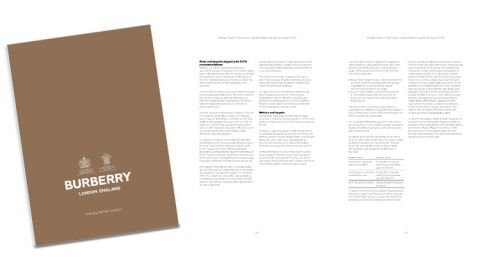
Annual Report 2020/21
What it got right
Burberry provides commentary on the scope of its reduction targets, demonstrating transparency in what the path to net zero realistically looks like for the company. Burberry also clearly lays out how the group approaches metrics and targets, differentiating between mitigation and monitoring metrics.
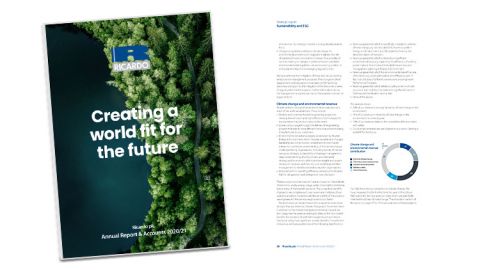
Annual Report 2020/21
What it got right
Ricardo emphasises financial opportunity and impact by publishing an analysis of its revenue in terms of the how much each source of its revenue is driven by climate change or other environmental issues. Ricardo also introduced a new metric that will track how much of its research and development spend was directed at addressing climate change.
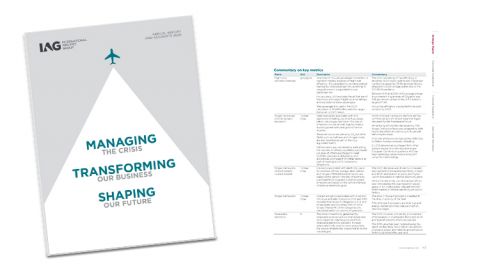
Annual Report 2020
What it got right
IAG dedicates a full page to providing commentary on the key climate metrics used by the company. The metrics and their units are clearly displayed alongside a detailed description of the metric and commentary that provides insight into the group’s performance that year.
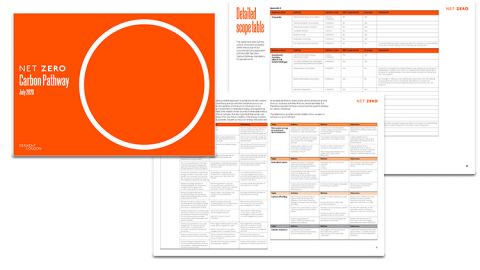
Net Zero Carbon Pathway
What it got right
Although not technically a TCFD disclosure, we wanted to highlight Derwent’s roadmap to net zero because of its comprehensive approach to defining the metrics and targets that will help the group to achieve its goal. Derwent clearly links pathway actions to metrics and provides a detailed overview of the carbon emissions that fall within the scope of its 2030 net-zero target.
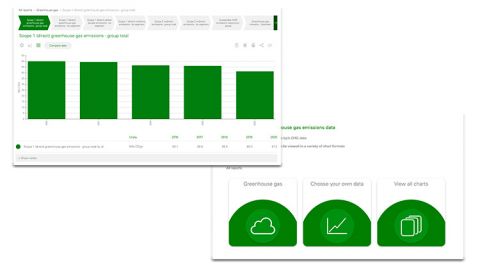
HSE charting tool
What it got right
BP’s interactive charting tool allows users to filter and analyse its current and historical emissions data. Being transparent and open with its data helps the company to build trust with key stakeholders as it pursues a 2050 net-zero goal.

Annual Report 2020/21
What it got right
Burberry provides commentary on the scope of its reduction targets, demonstrating transparency in what the path to net zero realistically looks like for the company. Burberry also clearly lays out how the group approaches metrics and targets, differentiating between mitigation and monitoring metrics.

Annual Report 2020/21
What it got right
Ricardo emphasises financial opportunity and impact by publishing an analysis of its revenue in terms of the how much each source of its revenue is driven by climate change or other environmental issues. Ricardo also introduced a new metric that will track how much of its research and development spend was directed at addressing climate change.

Annual Report 2020
What it got right
IAG dedicates a full page to providing commentary on the key climate metrics used by the company. The metrics and their units are clearly displayed alongside a detailed description of the metric and commentary that provides insight into the group’s performance that year.

Net Zero Carbon Pathway
What it got right
Although not technically a TCFD disclosure, we wanted to highlight Derwent’s roadmap to net zero because of its comprehensive approach to defining the metrics and targets that will help the group to achieve its goal. Derwent clearly links pathway actions to metrics and provides a detailed overview of the carbon emissions that fall within the scope of its 2030 net-zero target.

HSE charting tool
What it got right
BP’s interactive charting tool allows users to filter and analyse its current and historical emissions data. Being transparent and open with its data helps the company to build trust with key stakeholders as it pursues a 2050 net-zero goal.
How we can help
TCFD reporting has been made mandatory for premium-listed companies in the UK, and the first cohort of reporters will be published in just a few short months. The ESG team at Design Portfolio is supporting its clients to develop an approach to TCFD that fortifies the business against climate-related risks while capitalising on the opportunities available in a greener economy. Get in touch today to learn more about our bespoke TCFD service offering and how we can help you to embed sustainability by design into your business.